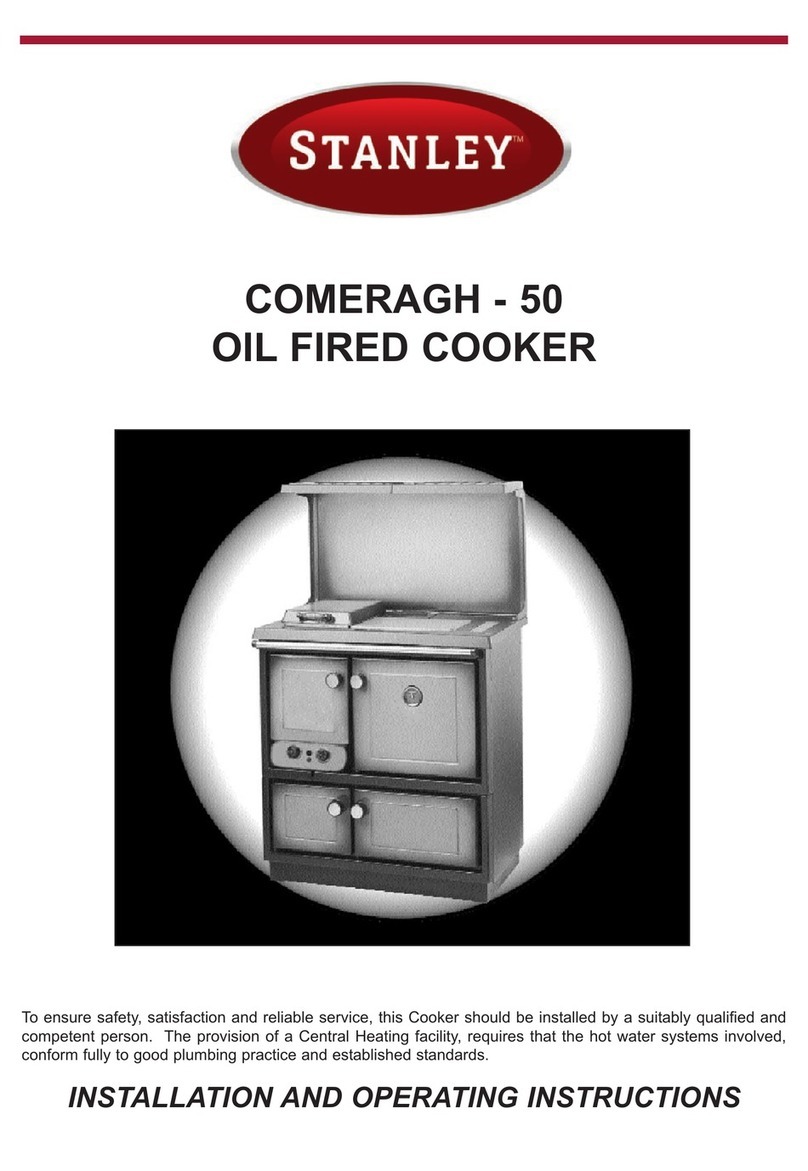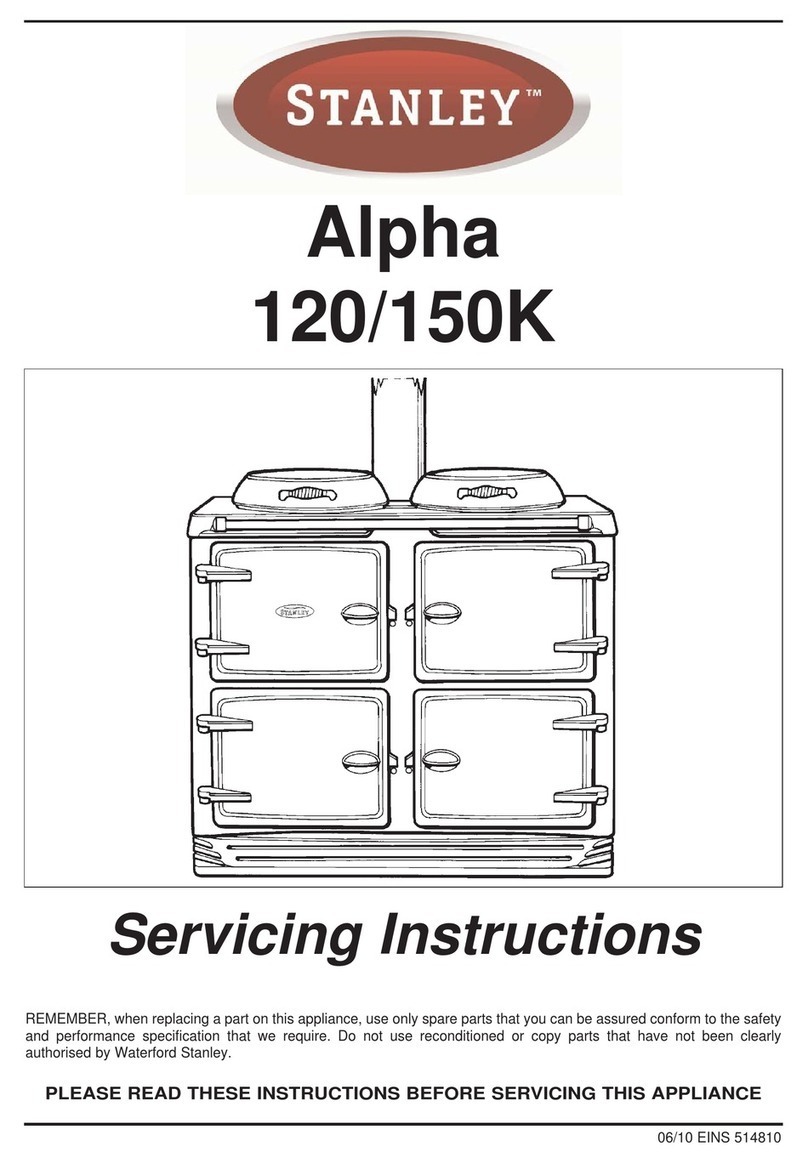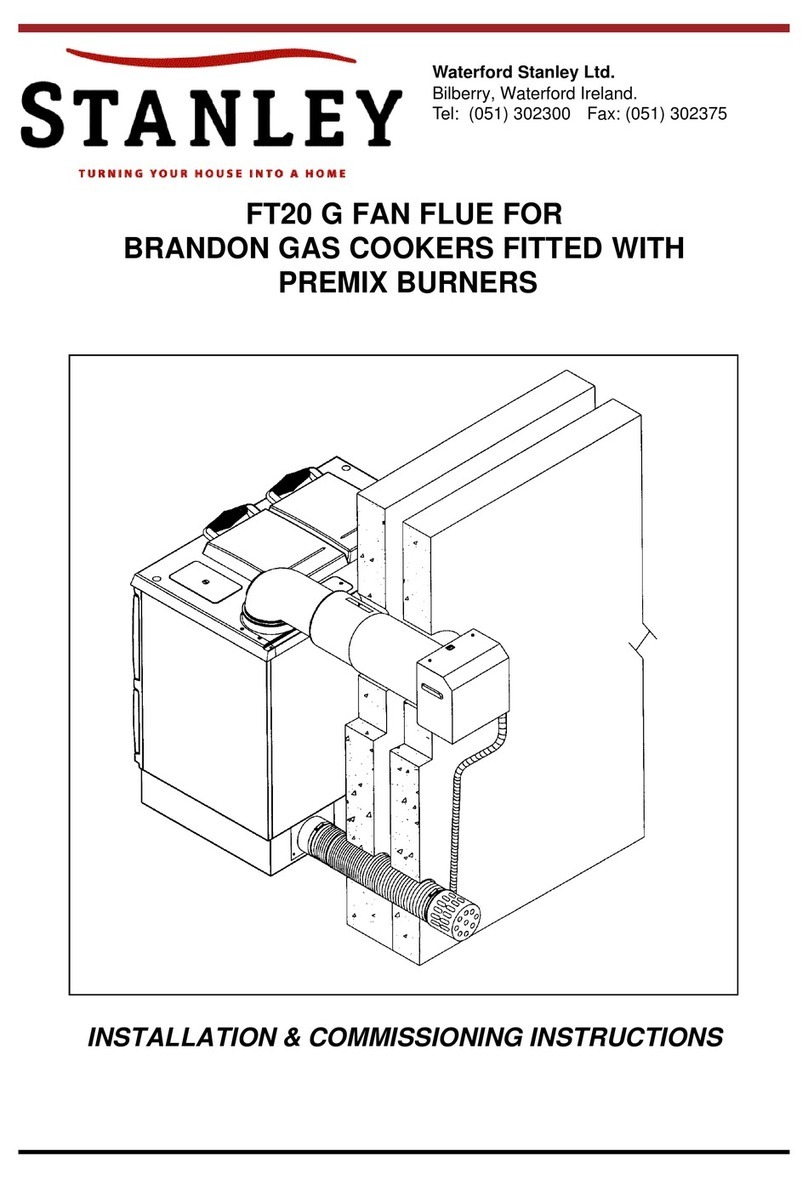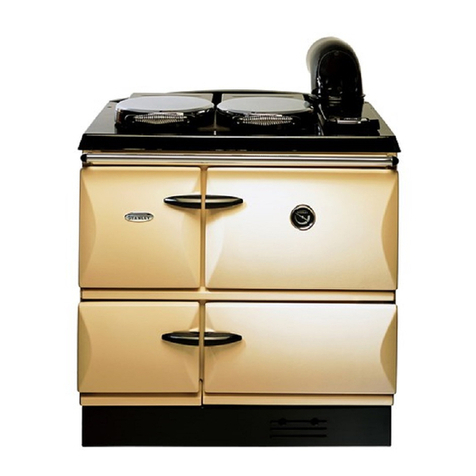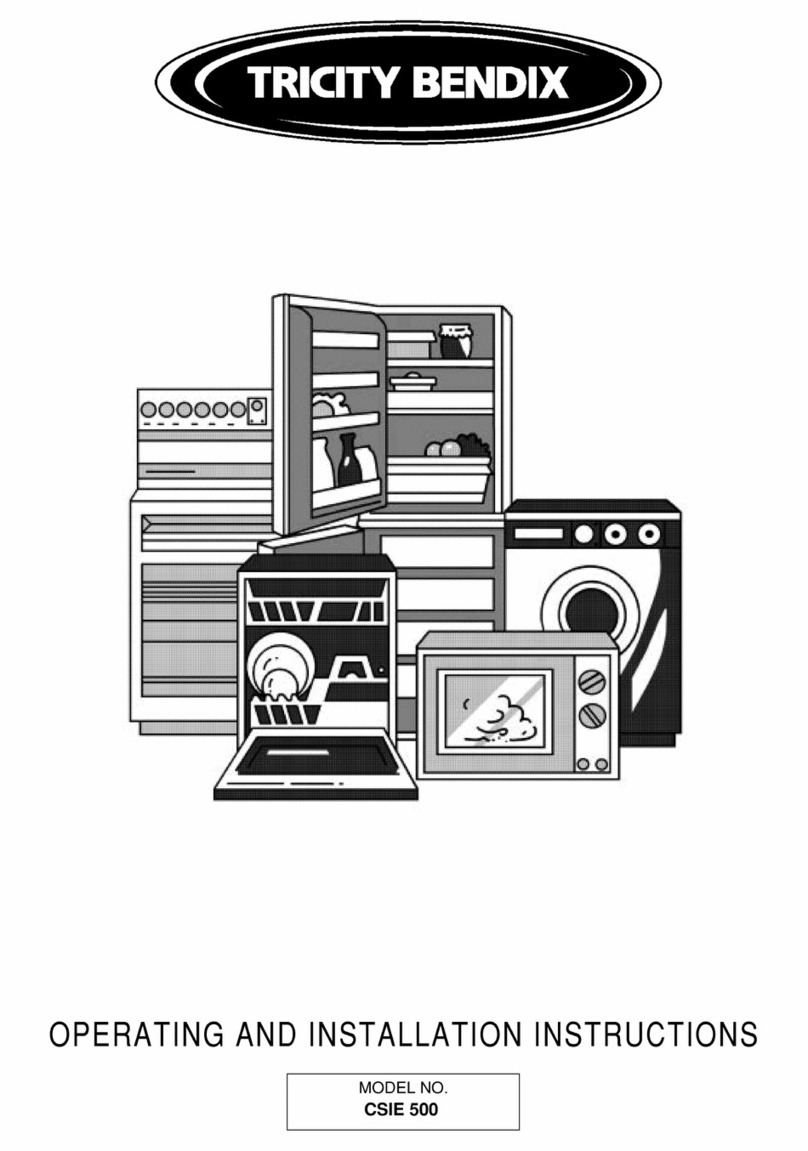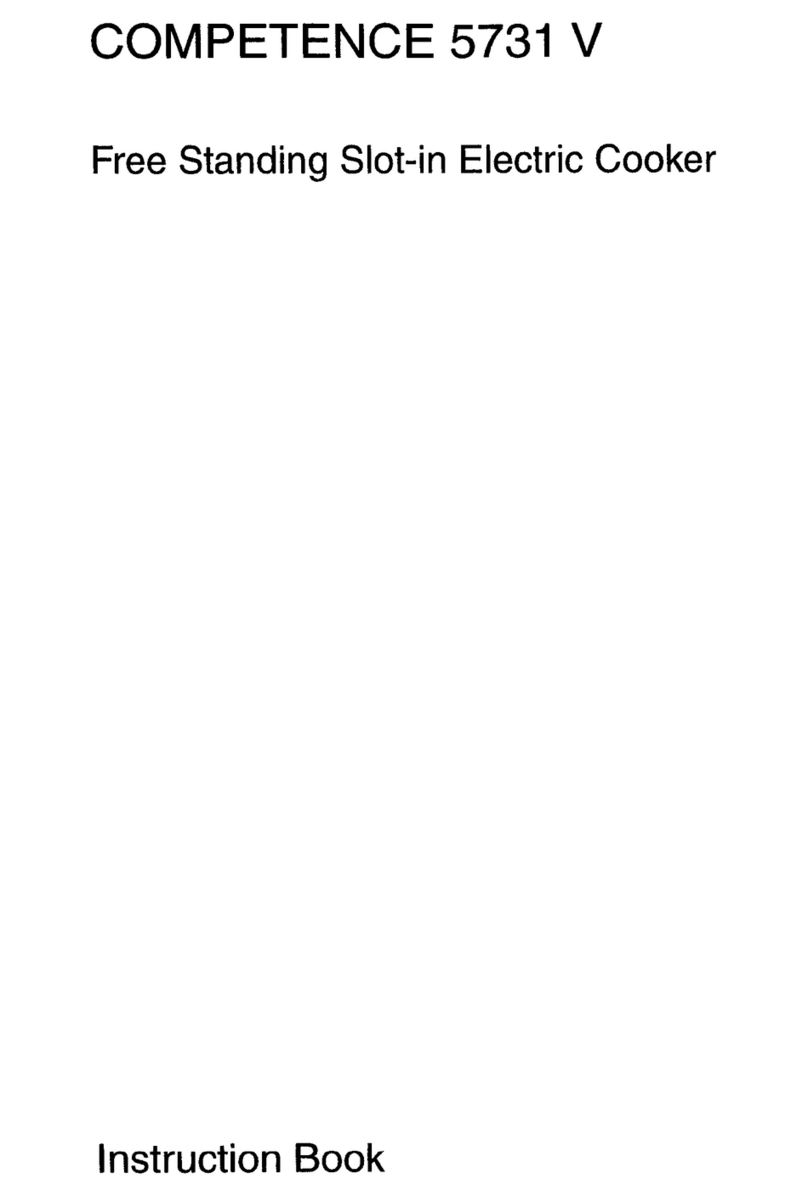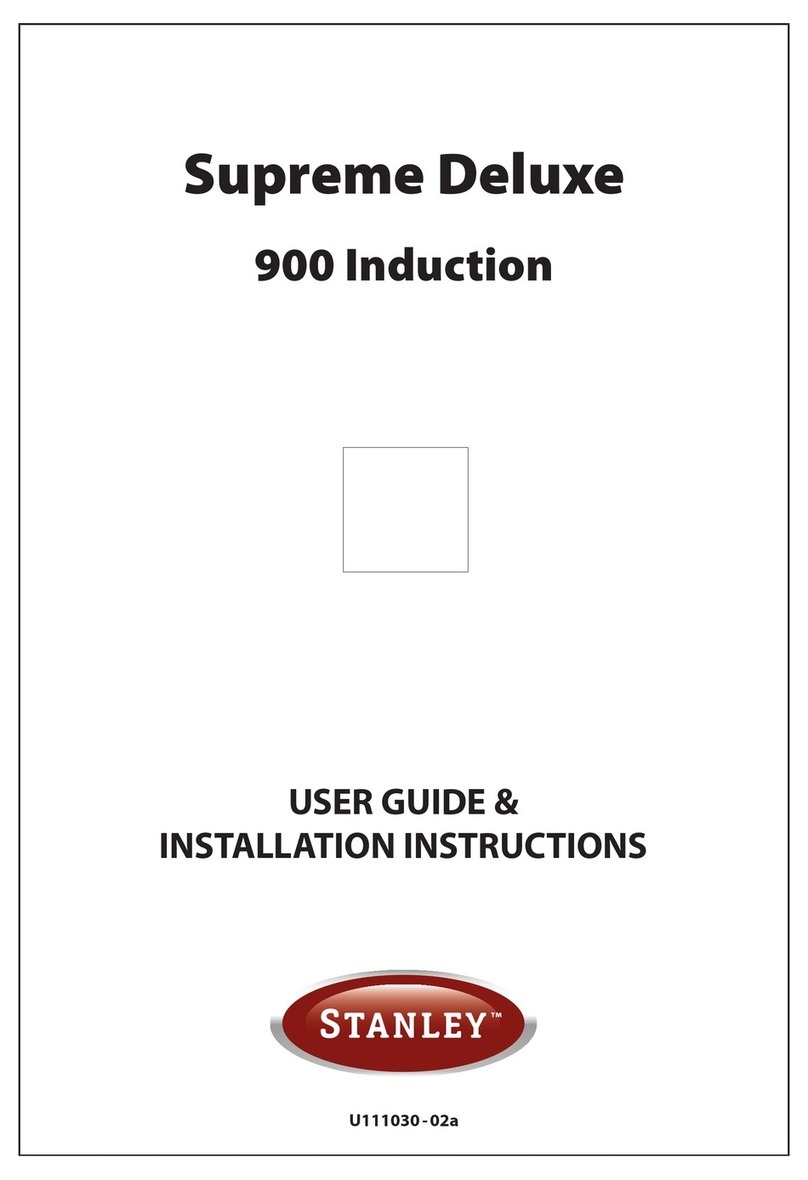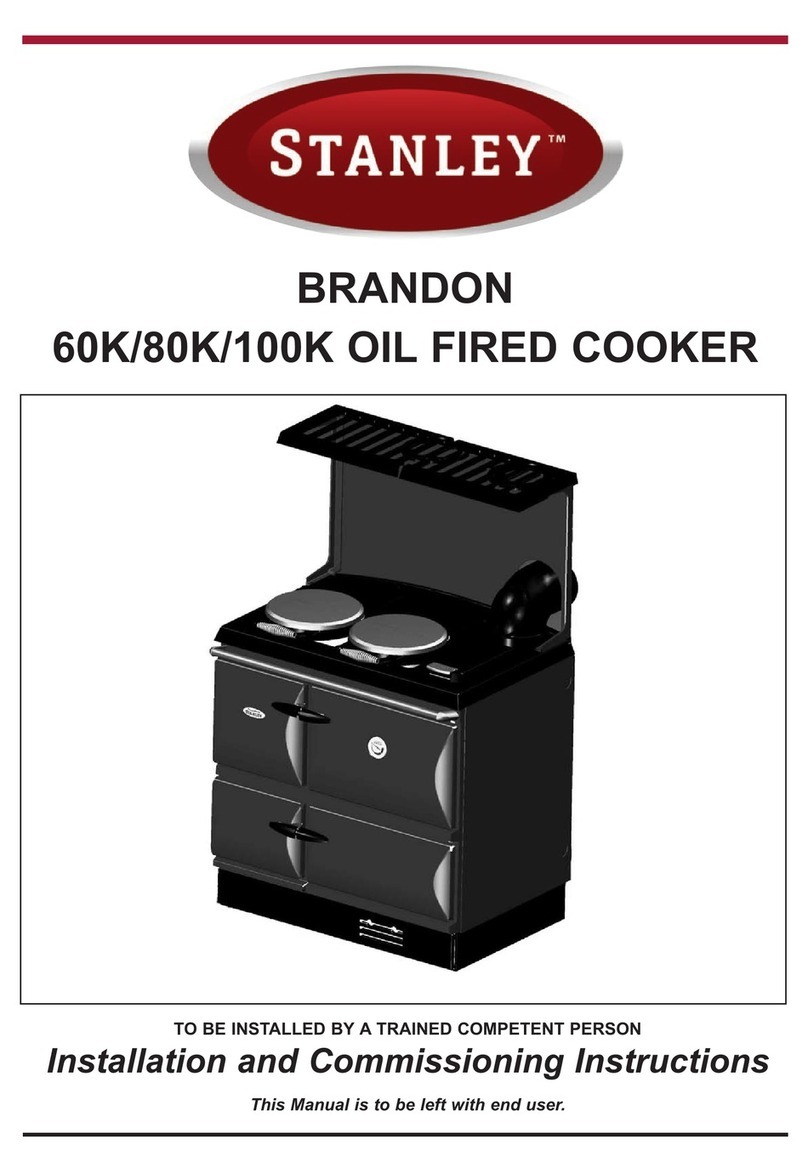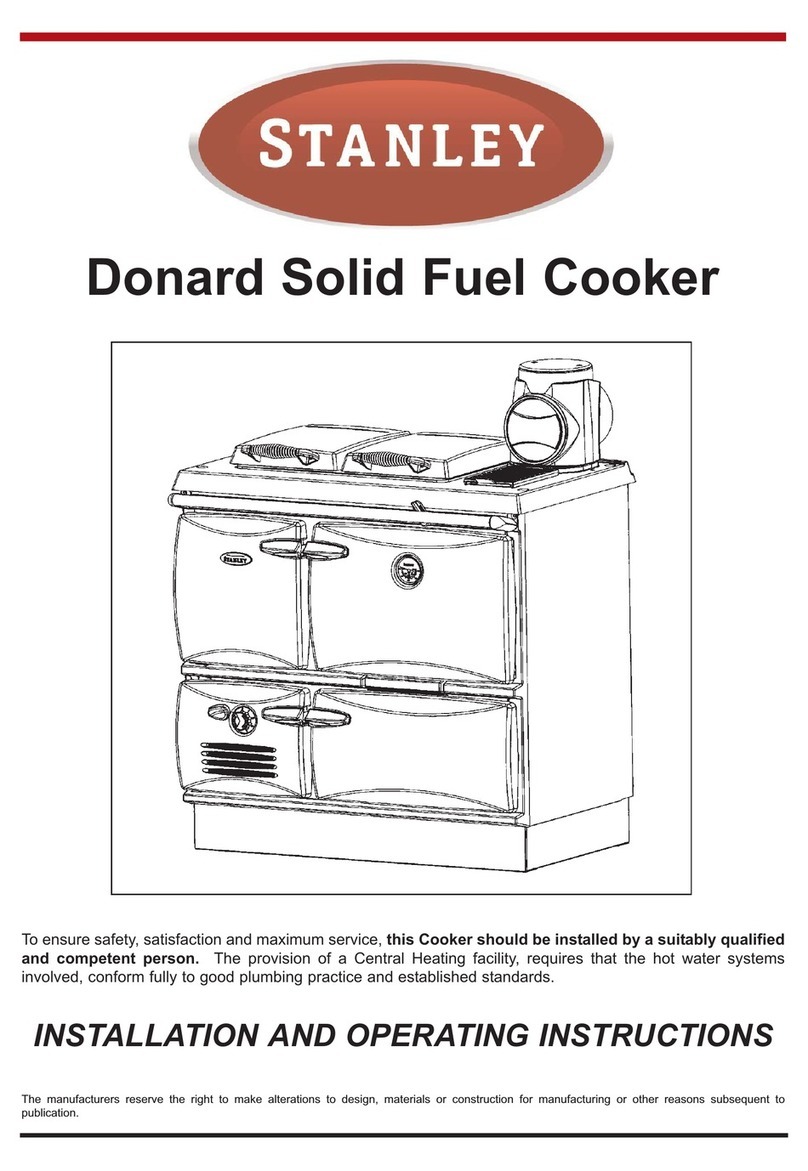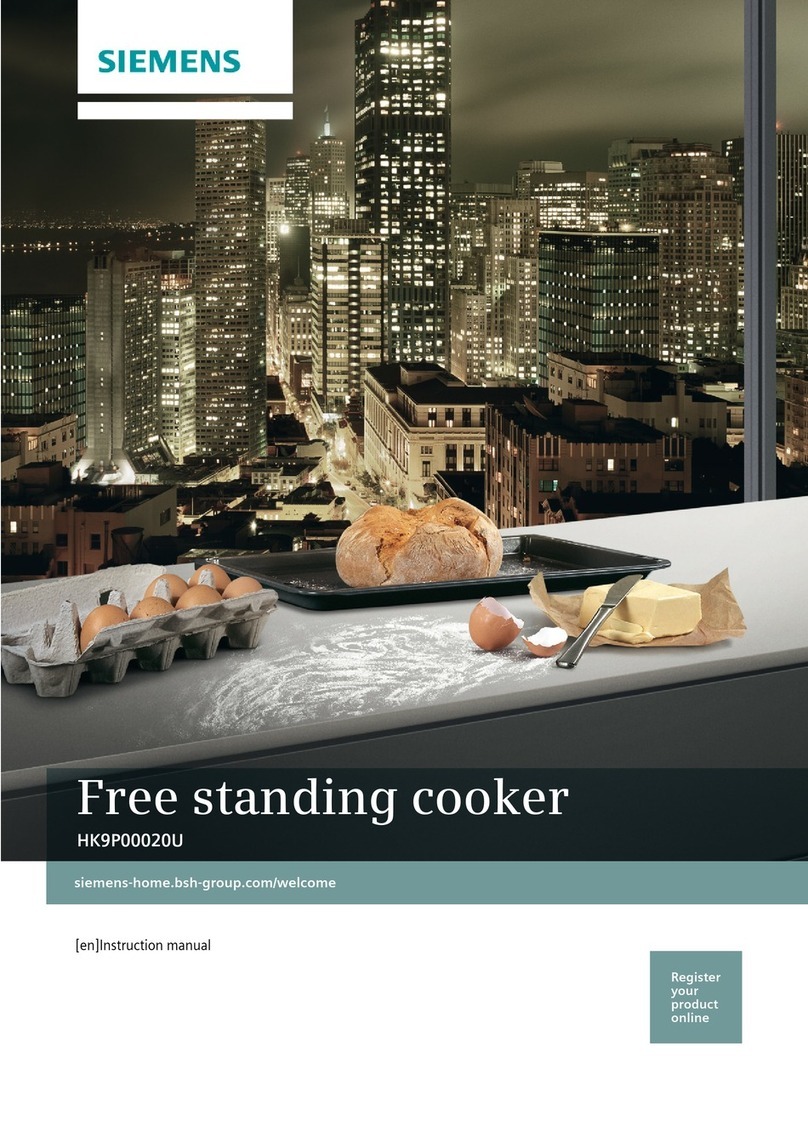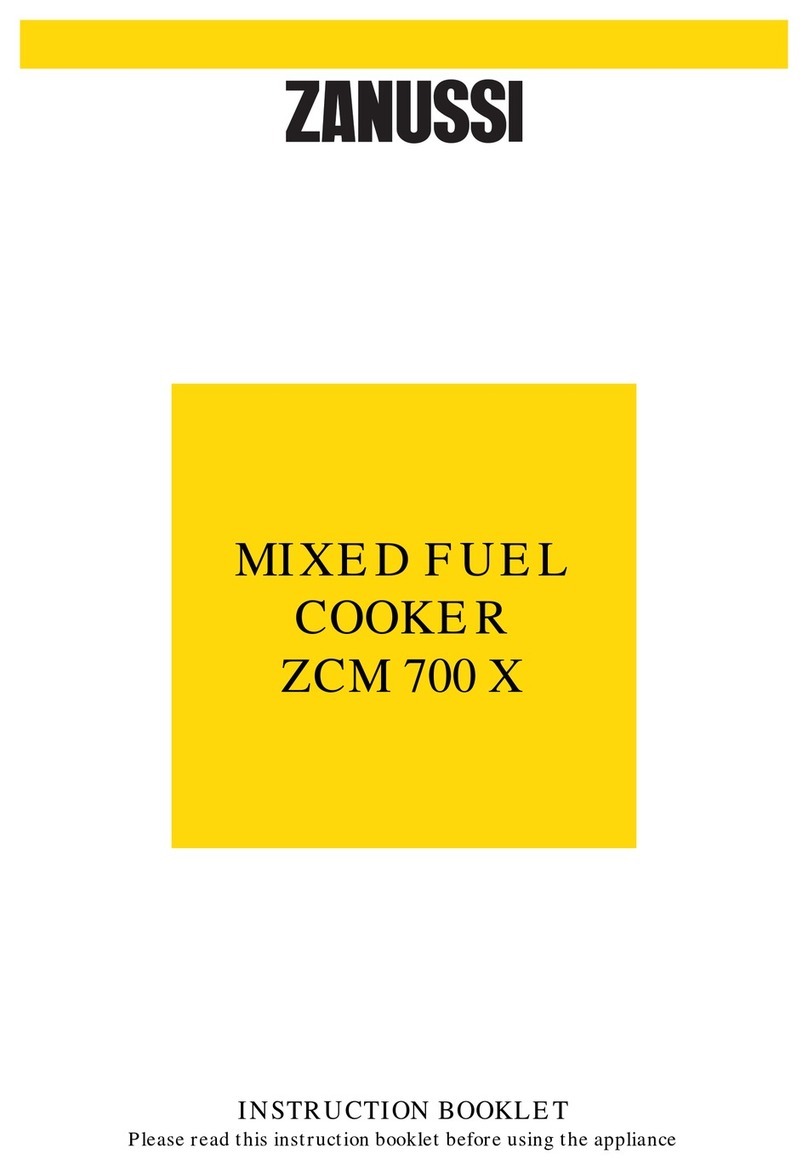8
FLUES
The flue pipe must be fitted with a cleaning access.
The flue and chimney must be inspected at least
twice annually and cleaned when necessary. During
periods of non-use, the flueway through the appli-
ance should be ventilated. By leaving the spinwheel
or ashdoor open, this will prevent the build up of
condensation.
The position of all flues and chimneys must comply
with Building Regulations.
FLUE PIPES
A flue pipe should only be used to connect an appli-
ance to a chimney and should not pass through any
roof space.
Flue pipes may be of any of the following materials:
(a) Cast iron as described in BS 41:1973 (1981)
(b) Mild steel with a wall thickness of at least
3mm.
(c) Stainless steel with a wall thickness of at least
1mm and as described in BS EN 10095:1999
specification for stainless and heat resisting
steel plate, sheet and strip, for grade 316 S11,
316 S13, 316 S16, 316 S31, 316 S33, or the
equivalent Euronorm 88-77 designation.
(d) Vitreous enamelled steel complying with
BS 6999: 1989.
FLUE CLEANING
The flue pipe must be fitted with a cleaning access.
the flue and chimney must be inspected at least
twice annually and cleaned when necessary. During
periods of non-use, the flueway through the appli-
ance should be ventilated. By leaving the spinwheel
or ashdoor open, this will prevent the build up of
condensation.
CHIMNEY
The Waterford Stanley Solid Fuel Range must be
connected to a Factory-Built Chimney, installed in
accordance with the manufacturer’s instructions or a
lined masonry chimney, acceptable to the authority
having jurisdiction. An existing masonry chimney
should be inspected and if necessary repaired by a
competent mason or be relined using an approved
relining system.
THE CHIMNEY SERVING THIS WATERFORD
STANLEY SOLID FUEL RANGE SHOULD NOT
SERVE ANY OTHER APPLIANCES. If you intend
to use a fireplace chimney, the fireplace opening
must be sealed. The overall height of the chimney,
measured from the floor on which the Range is
installed must be at least 4.572 meters (15ft).
Do not use more than two elbows.
Chimneys for use with solid fuel appliances should
be capable of withstanding a temperature of 1100oC
without any structural change which would impair
the stability or performance of the chimney.
Chimney’s should be built in accordance with BS EN
15287-1:2007, Design, installation and commission-
ing of chimney.
USE OF EXISTING FLUES AND CHIMNEYS
The spigot of this appliance will accept a 5” flue pipe.
Stanley cast iron pipes are highly recommended for
interior use. When connecting to an existing chim-
ney it is necessary to line the flue using either 6”
(150mm) rigid or flexible stainless steel flue liner. It
is not premitted to reduce the diameter of the con-
necting pipe to less than the appliance outlet
between the appliance and the chimney.
An existing flue pipe or chimney that has proved to
be satisfactory when used for solid fuel can normal-
ly be used for this appliance provided that its con-
struction, condition and dimensions are acceptable.
Flues that have proven to be unsatisfactory, particu-
larly with regard to down draught, must not be con-
sidered for venting this appliance until they have
been examined and any faults corrected. If there is
any doubt about an existing chimney, a smoke test
should be carried out.
Before connecting this appliance to a chimney or
flue pipe which has previously been used with
another fuel, the chimney or flue pipe must be thor-
oughly swept and/or lined accordingly.
All register plates, restrictor plates and dampers etc.
which could obstruct the flue at a future date must
be removed before connecting this appliance.
The combustion products from this appliance will
have a descaling effect on hardened soot deposits
left from burning solid fuels.
ALTHOUGH THE CHIMNEY MAY HAVE BEEN
CLEANED OF LOOSE SOOT PRIOR TO INSTAL-
LATION, IT IS IMPERATIVE THAT THE CHIMNEY
IS INSPECTED FOR SCALED SOOT PARTICLES
AFTER THE FIRST MONTH OF OPERATION AND
ANY LOOSE MATERIALS REMOVED TO AVOID
BLOCKAGE.


